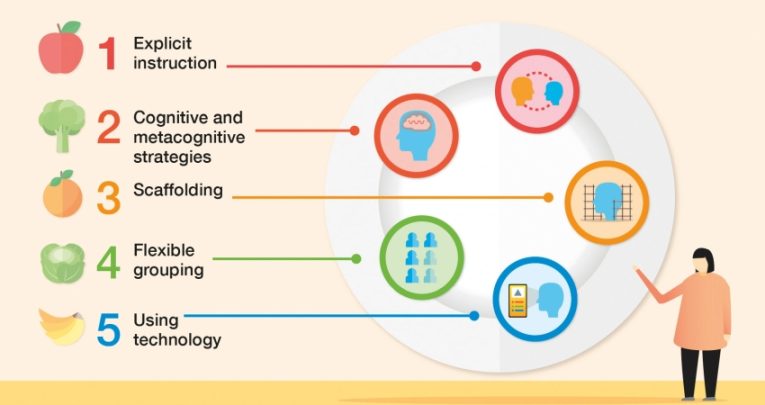Students with SEND – Use the five-a-day model to improve your inclusion

The EEF’s SEND Specialist, Gary Aubin, explores how teachers can support pupils with SEND in their daily practice

Meeting the range of needs presented by a class of children is undoubtedly a challenging task. However, research suggests that there are approaches teachers can employ to support learning and improve outcomes for all pupils, including those with Special Educational Needs.
The evidence which informed the EEF’s ‘Special Education Needs in Mainstream Schools’ guidance report indicated that there are five particular approaches which can be integrated into day-to-day teaching practice to raise attainment among children with additional needs, as well as their classmates.
Best of all, this ‘Five-a-day’ model already forms part of most teachers’ practice (or can be relatively easily added), meaning that small tweaks could make a significant positive difference for the pupils we teach.
The five approaches in question – as illustrated in the graphic above – are especially well-evidenced as having a positive impact. Harnessing these evidence-informed strategies will positively support all learners, including those with SEND. Teachers should develop a repertoire of these strategies, which they can then use daily and flexibly in response to individual needs, as a starting point for their classroom teaching.
For SENCos or other school leaders, it may be worth sharing the EEF’s ‘Five-a-day’ poster with staff to promote understanding of these strategies and what they entail.
Reduce the complexity
Picture what this can mean for an ECT at the start of term. Having checked their register, they’ve seen that there are students in their class with specific learning difficulties, speech, language and communication needs, and moderate learning difficulties.
Our ECT, already busy grappling with an array of challenges, will need to explore how best to support these pupils with their range of different SEND. After this, they then must apply those strategies to the relevant subject, phase, and curriculum, without diluting the quality of education provided to students without SEND.
What’s more, these complex habits will need to be sustained. It can all feel a little overwhelming to manage, which is why this evidence presents a welcome shift of perspective.
By using explicit instruction, for example, they’ll be able to check student understanding more frequently and model tasks before students begin to work independently. These steps will provide support for students who might otherwise struggle to grasp new concepts, or understand how to begin a task. This no add-on or a shiny new tool, but rather a form of high quality teaching that’s likely to benefit pupils with SEND.
Effective for everyone
There are some who will (rightly) point out that existing research alone isn’t enough to fully meet the challenges involved. They may well contend that the term ‘SEND’ covers a huge breadth of needs, and that it’s vital to really get to know individual children, work alongside families and build trusted relationships.
This evidence review doesn’t contest any of those points. It merely points out that studies exist in which the participants are all learners with SEND, and that many of the practices found to work well for learners with SEND will be similarly effective for students without any additional needs.
Any evidence that helps to develop teacher practice for pupils with SEND should be taken seriously, and any evidence that may improve outcomes for pupils with SEND should be considered carefully. Turning to an accessible ‘Five-a-day’ model when seeking to deliver high quality teaching for pupils with SEND is likely to prove valuable for all teachers, from ECTs to their more experienced colleagues.
Gary Aubin is the EEF’s Content Specialist for special educational needs and disabilities








